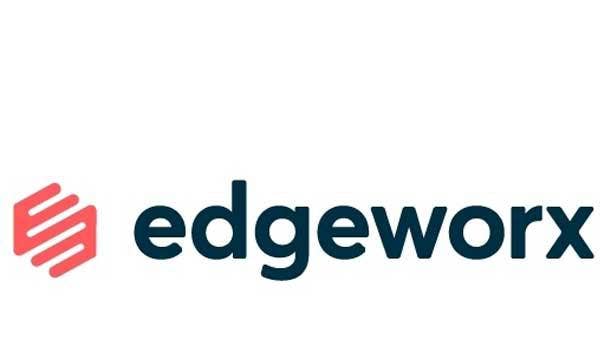The 10 Coolest New Edge Computing Platforms Of 2020
Here are 10 platforms that are helping businesses collect, secure, and process the explosion of data being generated at the edge of the network.

To The Edge And Back
The global edge computing market surpassed the market value of $3.91 billion in 2019, and it’s only set to take off with a compound annual growth rate of 14.2 percent from now until 2028. That’s according to recent findings from research firm ResearchandMarkets.com.
Longtime networking leaders and startups alike are flocking to the market with platforms and tools in hand to help businesses and channel partners brings processing capabilities closer to end users and devices. New IT requirements – many of which have been shaped by the COVID-19 pandemic – are boosting demand for new applications at the edge of the network, which could mean curbsides, parking lots, and manufacturing floors. Here are 10 of the coolest edge computing platforms of 2020 that are helping businesses collect, secure, and process the explosion of data being generated at the edge.

Aarna Networks’ AMCOP
Aarna Networks, an upstart that specializes in 5G and edge computing application automation software, offers an open source, vendor-agnostic solution for businesses. The three-year-old company comes to market with its Multi Cluster Orchestration Platform (AMCOP) for orchestration, lifecycle management, and real-time policy driven control loop automation of 5G network services and edge computing applications, according to the San Jose, Calif.-based company.
Aarna is a channel-friendly firm that goes to market through VARs to connect to enterprise customers.

Ananda Networks’ SG-LAN
Brand-new to the edge networking scene is startup Ananda Networks. The San Francisco-based company is helping businesses’ create private networks to connect all users, regardless of location.
Ananda in August revealed its flagship Secure Global LAN (SG-LAN) solution, which is letting businesses build their own networks to connect users, devices and services located anywhere, including headquarters, branch offices, remote locations or at home, or the cloud, with the simplicity and economics of a local area network, according to Ananda Networks.

Edgeworx ioFOG Engine
Three-year-old Edgeworx is bringing Kubernetes to the IoT edge with its ioFOG Engine. The offering allows customers to run any software on any endpoint using open source technology. Additionally, ioFOG software is seamlessly integrated with Kubernetes to enable Kubernetes to orchestrate microservices all the way to the edge, according to the edge-native open source software startup, headquartered in San Jose, California.

Cato Networks Edge SD-WAN
SASE specialist Cato Networks combines security and SD-WAN on its pure SASE platform that was built from the ground up.
The Tel Aviv-based company has been evolving its Cato Socket SD-WAN offering. The product allows businesses can choose their own mix of connections, such as fiber, LTE, or cable, and the Socket applies multiple traffic management capabilities such as active-active link usage, application- and user-aware QoS prioritization, dynamic path selection to work around link blackouts and brownouts, and packet duplication to overcome packet loss, according to Cato Networks.

EdgeMicro’s Edge Traffic Exchange
Rapidly growing edge startup EdgeMicro specializes in providing edge colocation data centers. These high-performance data centers are tied to the company’s proprietary Edge Traffic Exchange technology, which facilitates local IP access between cellular radios, cached data and compute services directly at the towers.
Businesses can take advantage of the Denver, Colo.-based company’s micro data centers for the edge, including one-fourth to full multi-racks offerings, EdgeMicro said.

EdgeQ’s AI-5G SoC
Self-proclaimed 5G systems-on-a-chip firm EdgeQ emerged from stealth mode in November with plans to bring AI to the edge of the network with 5G.
Specifically, Santa Clara, Calif.-based EdgeQ offers its AI-5G SoC for building 5G private wireless networks for IoT and industrial use cases. EdgeQ said it will target specific verticals including manufacturing, construction, energy, automotive, warehousing, and surveillance with its platform.

Infiot Thin Wireless Edge
Edge Networking startup Infiot made its move out of stealth mode this year with a new approach to edge networking and IoT connectivity.
Menlo Park, Calif.-based Infiot is offering its cloud-delivered intelligent thin wireless edge access platform that supports wired, wireless and cellular connectivity. The Intelligent Edge platform brings together connectivity, zero trust security and edge-computing for remote users, sites and devices anywhere in the world, according to Infiot, which is making the channel its primary route to market.

Kloudspot Situational Awareness And Intelligence Platform
Upstart Kloudspot, which specializes in location services and IoT, offers a situational awareness and intelligence platform that provides monitoring and analytics for physical spaces. The platform uses AI to continuously identify and predict issues, which lets IT teams take action to maximize the opportunities in their physical spaces right away, Kloudspot said.
The Sunnyvale, Calif.-based company’s platform is also helping employees get back to work safely. The platform can use AI to track whether employees and guests are following COVID-19 safety measures such as social distancing and mask-wearing.

Pensando Systems’ Distributed Services Platform
Three-year-old edge cloud startup Pensando Systems has built a new edge services model for enterprise and cloud computing. The company’s Distributed Services Platform includes a custom, programmable P4 processor, which the company has named Capri, that is optimized to execute a software stack delivering cloud, compute, network, storage and security services at cloud scale with minimal latency and very low power requirements, according to the Milpitas, Calif.-based company.
Capri can be easily installed in any standard server via Pensando’s Distributed Services Card (DSC), which provides software-defined services at the server edge, eliminating an assortment of discrete appliances throughout the data center and simplifying IT operations, the company said.

Vapor IO Kinetic Edge Platform
Vapor IO emerged from stealth mode five years ago and brought with it its Kinetic Edge platform to help operators and developers employ successful with edge deployments.
The Kinetic Edge platform serves up edge colocation, edge exchange and edge networking services in top metropolitan markets. Vapor IO incorporates software-defined networking-based edge technologies to eliminate unnecessary latency between user and applications, according to the Austin, Texas-based upstart.